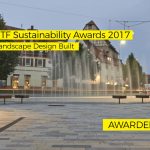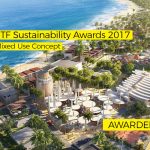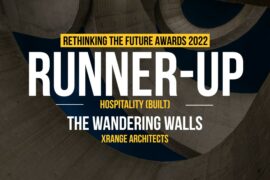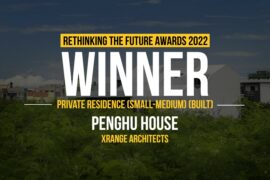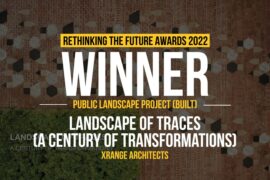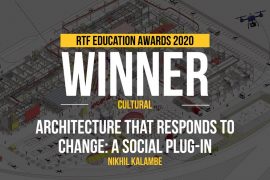Kenting has about 6 million visitors a year, with an average of 1462 visitors every day, more often, locals and foreign tourists lack the environmental awareness and arbitrarily destroy marine resources such as corals and snails, thus causing serious damage to the ecology of Kenting coast.
RTF Sustainability Awards 2017
Second Award | Category: Landscape Design
Architect: Hsiao Yen Chun
Team Members: HR Studio Jhuo Jhong Ren
University: National Taiwan University of Science and Technology
Country: Taiwan

During the Kenting music season, the amount of garbage produced per person per day was 1.39 kg, the rest of the time, and the average amount of garbage produced per person per day dropped to 0.89 kg.
Due to anomalous climate and sea level rise, the frequency and intensity of the typhoon’s invasion of Taiwan have become increasingly intense. Nearly one-third of beaches in Kenting disappear because of the severe erosion of huge typhoon waves.

Because of over-exploitation caused by the serious erosion of the coast.King South Bay coast due to excessive human development and activities, not only destroyed the balance of natural sand drift but also resulting in serious erosion of the coast,
To reduce the threats like that, the government has an average of 14 million NTD budgetary rents per year to solve this problem.
Coral ecosystems in the ocean of Kenting have been more and more monotonous for 26 years, at the same time, the coverage of living corals has also dropped by 63% in 26 years. Coral is an indicator of the marine ecosystem, and conservation of coral growth environment is currently an important issue.

- Coastal ecosystem restoration system
CERS-1/4 Coastal eco-construction method
The effect of using submarine water breaker project approach to slow down ocean currents and change the direction of currents to accumulate sand silt in the shape of a mountain.
CERS-2/4 Sea purification mechanism
The mechanism a floating rubbish bin inside the tetrapods that is located in the water at marinas, docks, yacht clubs and commercial ports.
The mechanism moves up and down with the range of tide collecting all floating rubbish from ocean currents and surrounding area.

CERS-3/4 Coral growth promotion technology (Eco-block)
① Phase of joining larvae
The effect that a vortex flow is formed in the vicinity of the processed part and the larvae are trapped
② Early stages of birth
Effects of reducing juvenile corals growing in the gap, reducing the influence of coral predators
③ Late stage of late life
Prevention of detachment (increase in frictional force) effect due to increase in the area where the irregularities are formed
CERS-4/4 Marine ecological environment project
Set up tetrapods to cope with different corals and marine habitats, ease waves and create a good environment for biological growth

And due to different lighting needs and suitable environment planning conservation area、education area and activity area in order to achieve sustainable development.
- Phased development
2018-2020
* Set the submerged-dike began to slow the waves and nourish the beach.
* Set symbiotic tetrapods to a suitable location for coral larvae.
* Planning and construction of conservation area.
2021-2025
* Complete the restoration and protection of the beach
* Regeneration of corals and ocean purification system
* Promote coastal-ecological-education
2025-2030
* Coastal ecological conservation.
* Coastal ecological education is complete and continuous.
* Expand other areas which need be focused

If you’ve missed participating in this award, don’t worry. RTF’s next series of Awards for Excellence in Architecture & Design – is open for Registration.
[button color=”black” size=”medium” link=”httpss://www.re-thinkingthefuture.com/awards/” icon=”” target=”false”]Participate Now[/button]
[g-gallery gid=”22428″]


